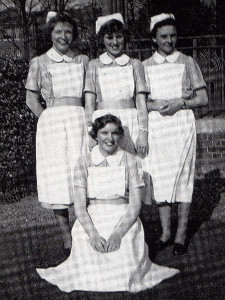
Reading ‘Polishing in the Old Days’ in Best of British (October 1999) reminded me of the orthopaedic ward during my SRN training in the 1950s.
Each Wednesday morning, when the patients’ breakfast was over, the ward maids swept the old wooden floor with their brooms, then along came the Plaster of Paris technician to polish it.
He pulled the beds from one side of the ward to the centre and then, using a thick pad of blanket pieces on an extra long broom handle, he spread the polish, rubbing it well in over that section of the floor. Next he used the ‘bumper’ with a backwards and forwards movement to polish it.
With those beds back in position he repeated his task on the opposite side and finally the centre. The whole job took him roughly an hour and a half.
The floor always looked and smelled so clean when he’d finished, and the nurses dare not drop anything on it!
A few patients might have been up and about, using crutches or walking sticks, or perhaps just hobbling along, but there was probably no ‘nonslip’ polish in those days and no safety at work rules either. I cannot remember hearing of any accidents, though.
It was then the junior nurse’s duty to make sure every bed wheel faced the same direction, and that the beds were evenly spaced by counting his or her footsteps between them.
Upon arrival, and by Sister’s orders, all new patients had a bath and a hair wash, even though some had been to the hairdresser’s knowing their stay would be for several weeks.
I spent three months on this female ward as a junior, and once a week with the ‘head tray’. I had to comb each patient’s hair with a small tooth comb.
Barbara L Gore








